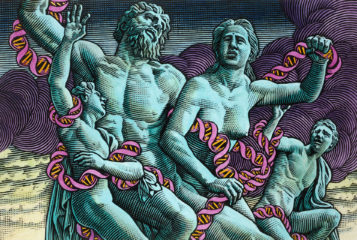Two scientists claim to have pushed the boundaries of what can be learned about the ancestral history of the human race from one person's genome. Dr Richard Durbin and Dr Heng Li from the UK's Wellcome Trust Sanger Institute in Cambridge used information from the genomes of only seven people to show that humans living in Europe and China endured a severe population bottleneck between 10,000 and 60,000 years ago.
In the study published in Nature, the scientists used a new statistical technique to analyse differences between alleles within a genome. They found the more similar the alleles, the more recent the genetic separation was between parents - and by calculating the separation date, the researchers were able to estimate past population sizes. 'Each human genome contains information from the mother and the father, and the differences between these at any place in the genome carry information about its history', Dr Li said.
Scientists have traditionally performed this kind of analysis on single points of the genome, such as the Y chromosome (which we inherit only from our fathers) or mitochondrial DNA (which we inherit only from our mothers). However by analysing only mitochondrial DNA researchers can only provide a record of population trends up to 200,000 years in the past, as that is the last point there was one possible common female ancestor. But by taking the entire genome into account, scientists are able to look one million years in the past.
Dr Li added: 'Since the genome sequence is so large, we can combine the information from tens of thousands of different places in the genome to build up a composite history of the ancestral contributions to the particular individual who was sequenced. We can also get at the historical relationship between two different ancestral populations by comparing the X chromosomes from two males'.
The researchers also used the technique to estimate the amount of time spanned from when the alleles shared the most recent common ancestor. They found that even while two distinct populations of Africans and non-Africans were beginning to emerge, around 100,000 years ago, people from the two populations were still interbreeding right up until approximately 20,000 years ago. Previous approaches had failed to identify this.
Dr Durbin anticipates that this new approach will provide even more insights previously unknown to science: 'Our new approach uses the whole sequence of single individuals, and relies on fewer assumptions. Using such techniques we will be able to capitalise on the revolution in genome sequencing and analysis from projects such as the 1000 Genomes Project, and, as more people are sequenced, build a progressively finer detail picture of human genetic history'.





Leave a Reply
You must be logged in to post a comment.